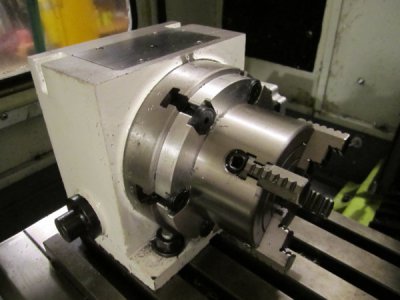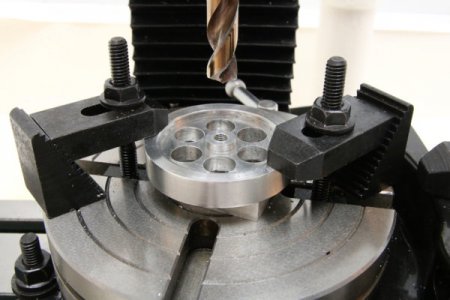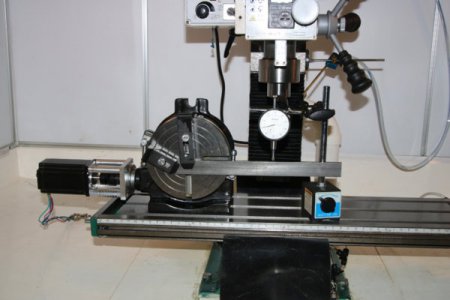- Joined
- Jan 3, 2015
- Messages
- 400
The thing about the rotary table that puzzles me is that I wrote down both decimal inches, and mm, and it doesn't strictly match anything.
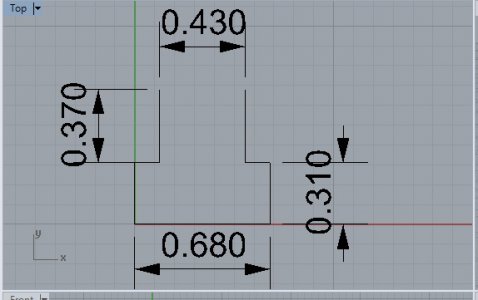
The width of the slot is 11.0 mm, the bottom width is 17.3mm, wide section height is 7.64mm and the narrow section height is 9.4mm.
The dimensions look like a 3/8 slot except for the width of the bottom part (0.68). Engineers' references say that should be bigger: 0.719 at minimum. In metric, that slot with of 11 mm is halfway between M8 and M10 at 10 and 12mm, respectively. Otherwise it looks like it would be M8, like you say. Either way, one dimension messes up the match.
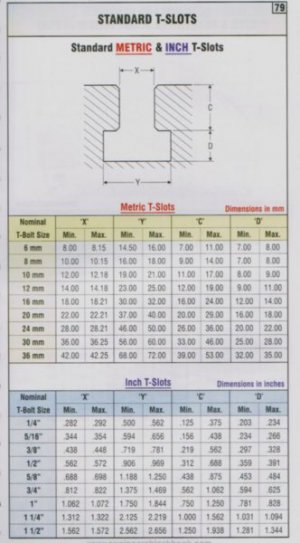
The slot is just a bit tight on 7/16 (.438) which is what I have for the 0704. I can slide one of those nuts in the slot if the nut's upside down, but the bottom slot is too narrow and the bottom section height is too short for the 7/16 Tee-nut.
I tried some hardware I have and found a 3/8-16 "hardware store" nut fits in width but is too tall for the slot. A 3/8 bolt will fit in the slot, so I'd have threads sticking out instead of a nut in the slot.
Not that there's anything wrong with that.
Hoss has a video where he makes an adapter to mount a 6" four-jaw chuck on the table. He made his own Tee nuts. A four jaw might be a good thing to have on the rotary table for almost everything.

The width of the slot is 11.0 mm, the bottom width is 17.3mm, wide section height is 7.64mm and the narrow section height is 9.4mm.
The dimensions look like a 3/8 slot except for the width of the bottom part (0.68). Engineers' references say that should be bigger: 0.719 at minimum. In metric, that slot with of 11 mm is halfway between M8 and M10 at 10 and 12mm, respectively. Otherwise it looks like it would be M8, like you say. Either way, one dimension messes up the match.

The slot is just a bit tight on 7/16 (.438) which is what I have for the 0704. I can slide one of those nuts in the slot if the nut's upside down, but the bottom slot is too narrow and the bottom section height is too short for the 7/16 Tee-nut.
I tried some hardware I have and found a 3/8-16 "hardware store" nut fits in width but is too tall for the slot. A 3/8 bolt will fit in the slot, so I'd have threads sticking out instead of a nut in the slot.
Not that there's anything wrong with that.
Hoss has a video where he makes an adapter to mount a 6" four-jaw chuck on the table. He made his own Tee nuts. A four jaw might be a good thing to have on the rotary table for almost everything.

